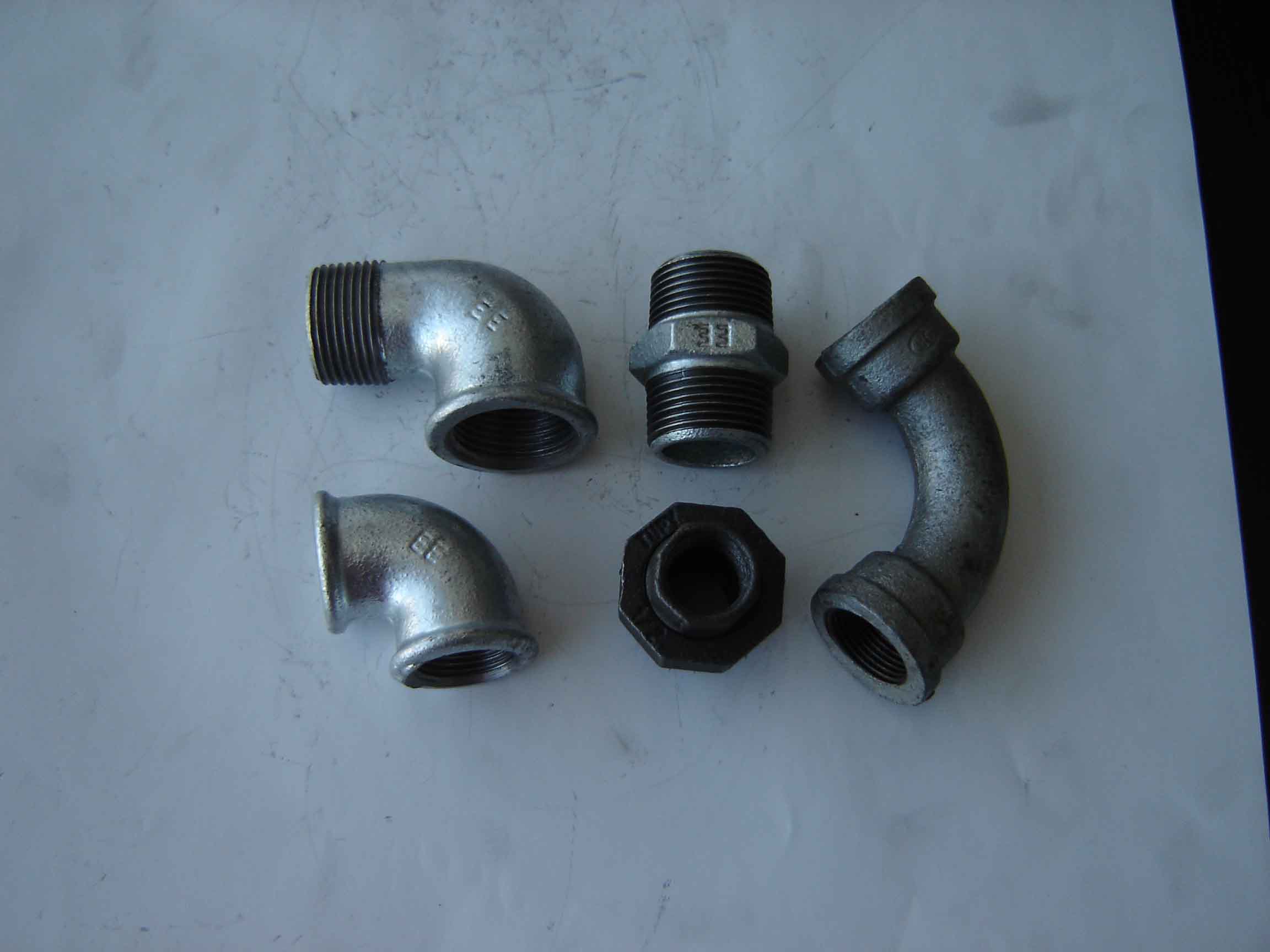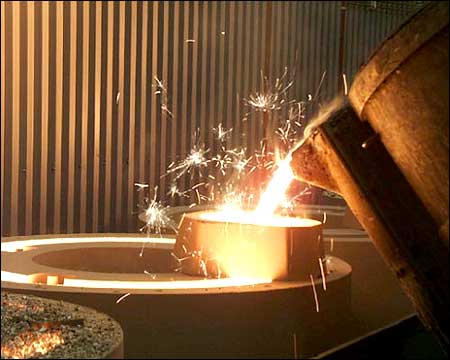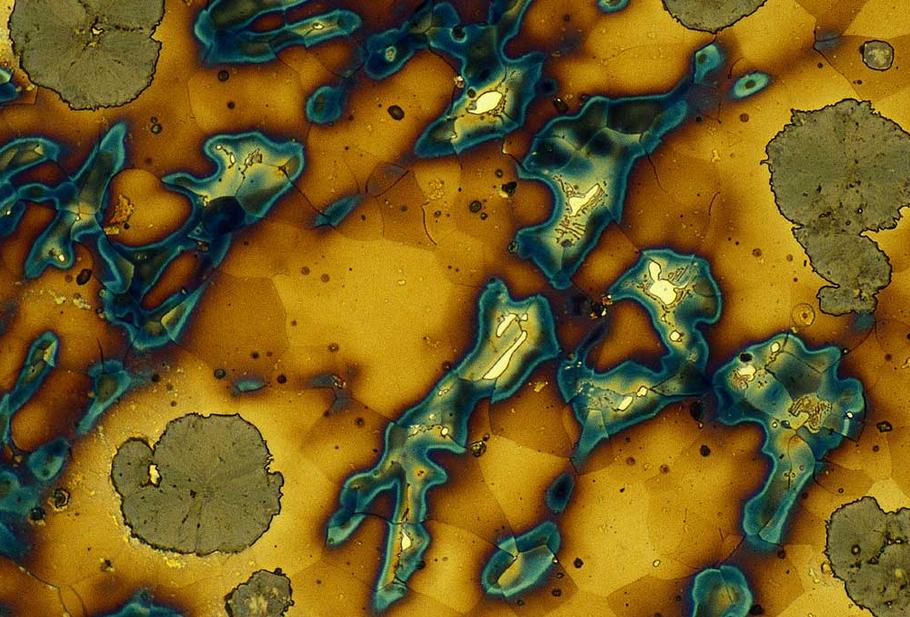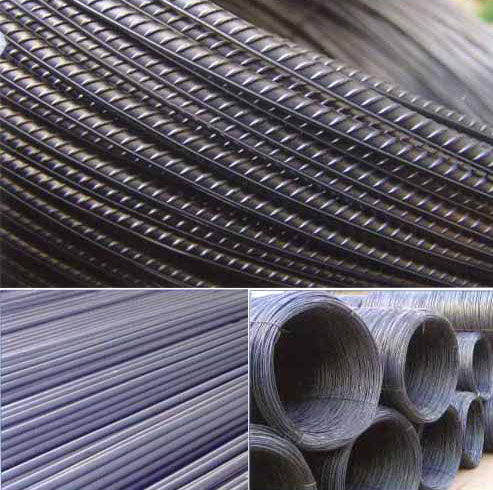What is Malleable Cast Iron?
Malleable Cast Iron - a Definition
Malleable cast iron is produced from white cast iron, which is made from hot liquid iron with certain chemical components. The white cast iron needs to be treated by malleablizing, such as graphitizing or oxidation and decarbonization, then its metallographic structures or chemical components will be changed, so can become into malleable cast iron.
 Malleable Cast Iron Products
Malleable Cast Iron Products
Malleable iron is cast as White iron, the structure being a metastable carbide in a pearlitic matrix. Through an annealing heat treatment the brittle as cast structure is transformed. Carbon agglomerates into small roughly speherical aggregates of graphite leaving a matrix of ferrite or pearlite according to the exact heat treat used. Three basic types of malleable iron are recognized within the casting industry, Blackheart malleable iron, Whiteheart malleable iron and Pearlitic malleable iron.
Malleable cast iron is a heat-treated iron-carbon alloy, which solidifies in the as-cast condition with a graphite-free structure, i.e. the total carbon content is present in the cementite form (Fe3C). Two groups of malleable cast iron are specified (whiteheart and blackheart malleable cast iron), differentiated by chemical composition, temperature and time cycles of the annealing process, the annealing atmosphere and the properties and microstructure resulting therefrom. The chemical composition of malleable iron generally conforms to the ranges : Small amounts of chromium (0.01 to 0.03%), boron (0.0020%), copper (max 1.0%), nickel (0.5 to 0.8%), and molybdenum (0.35 to 0.5%) are also sometimes present.
Malleable iron starts as a white iron casting that is then heat treated at about 900 °C (1,650 °F). Graphite separates out much more slowly in this case, so that surface tension has time to form it into spheroidal particles rather than flakes. Due to their lower aspect ratio, spheroids are relatively short and far from one another, and have a lower cross section vis-a-vis a propagating crack or phonon.
They also have blunt boundaries, as opposed to flakes, which alleviates the stress concentration problems faced by grey cast iron. In general, the properties of malleable cast iron are more like mild steel. There is a limit to how large a part can be cast in malleable iron, since it is made from white cast iron.
Like other similar irons with the carbon formed into spherical or nodular shapes, malleable iron exhibits good ductility. Incorrectly considered by some to be an “old” or “dead” material, malleable iron still has a legitimate place in the design engineer’s toolbox. Malleable is a good choice for small castings or castings with thin cross sections (less than 0.25 inch, 6.35 mm). Other nodular irons produced with graphite in the spherical shape can be difficult to produce in these applications due to the formation of carbides from the rapid cooling.
Comparing with the gray cast iron, malleable cast iron has better strength and ductility, especially better impact resistance in low temperatures. Comparing with cast steel, malleable cast iron has better abrasive resistance and shock absorption. Comparing with the ductile iron, both of them have good strength and ductility, but malleable iron has better impact resistance, but ductile iron has better abrasive resistance.
Malleable iron also exhibits better fracture toughness properties in low temperature environments than other nodular irons, due to its lower silicon content. The ductile to brittle transformation temperature is lower than many other ductile iron alloys.
In order to form properly the spherical-shaped nodules of graphite in the annealing process, during the casting process care must be taken to ensure the iron casting will solidify with an entirely white iron cross section. Heavier sections of a casting will cool slowly and with the slow cooling some primary graphite may form. This graphite will form random flake-like structures and will not transform in heat treatment. When stress is applied to such a casting in application the fracture will be lower than normal and the large particles of primary graphite can be seen. Such iron is said to have a ‘mottled’ appearance. Some countermeasures can be applied to enhance forming the all white structure, but malleable iron foundries often avoid producing heavy sections due to the constraint of slow cooling times causing the formation of the primary graphite.
Malleable Cast Iron Microstructure
After the casting and heat treat process malleable iron can be shaped through cold working, such as stamping for straightening, bending or coining operations. This is possible due to malleable iron property of being less strain rate sensitive than other materials.
Whiteheart malleable cast iron
The microstructure of whiteheart malleable cast iron depends on section size. Small sections contain pearlite and temper carbon in ferritic substrate. The microstructure shall not contain flake graphite. In the large sections exists three different zones :
- Surface zone which contains pure ferrite,
- Intermediate zone which has pearlite, ferrite and temper carbon,
- Core zone containing pearlite, temper carbon and ferritic inclusions.
Blackheart and pearlitic malleable cast iron
The microstructure of blackheart malleable cast iron has a matrix essentially of ferrite. The microstructure of pearlitic malleable cast iron has a matrix, according to the grade specified, of pearlite or other transformation products of austenite. Graphite is present in the form of temper carbon nodules. The microstructure shall not contain flake graphite.
Black heart malleable cast iron is mainly used to produce the iron casting parts with impact, shake or torsion functions. Normally used to produce rear axle housing castings, spring bracket, low pressure valve body, pipe fittings, tools and wrenches. Black heart malleable cast iron is also called as ferritic malleable cast iron. Pearlite malleable cast iron has higher strength, hardness and abrasive resistance. So, it is mainly used to produce the abrasion resistant parts for motive power machinery and agricultural machinery.
Malleable cast iron designation system
The designation according to ISO 5922 (1981) of malleable cast iron consists of one letter designating the type of iron, two figures designating the tensile strength and two figures designating the minimum elongation.
Letters designating the type of malleable cast iron can be:
- W for whiteheart malleable cast iron,
- B for blackheart malleable cast iron,
- P for peariitic malleable cast iron.
This letter is followed by a space.
- The first two figures designating the minimum tensile strength, in Newtons per square millimetre, of a 12 mm diameter test piece, divided by ten. For example if the minimum tensile strength were 350 N/mm², the designation would be 35.
- The next two figures designating the minimum elongation (L0 = 3d) as a percentage of a 12 mm diameter test piece. A nought (0) shall be the first figure when the value is less than 10%, for example if the minimum elongation is 4%, the designation is 04, and if the minimum elongation is 12%, the designation is 12.
For example: The designation of a whiteheart malleable cast iron having a minimum tensile strength of 400 N/mm² and minimum elongation of 5% when measured on a 12 mm diameter test piece, would be W 40-05.
Malleable Cast Iron is the traditional material for manufacturing pipe fittings whose characteristics make it as ideal choice. It is an iron-carbon alloy which combines the outstanding properties of cast iron and steel to produce a material which can still be cast but has improved strength and ductility. It also allows the production of complex shapes combined with a thin wall section.
In its cast state it is very hard and brittle and unsuitable for most engineering applications. A controlled heat treatment process (annealing) is applied to the cast material which changes the structure and reduces the carbon content. The resulting microstructure gives a material which is less hard, no longer brittle and now has good malleable and ductile properties while retaining a sufficiently high strength.









 Alloy Suppliers
Alloy Suppliers  Aluminum
Aluminum  Aluminum Extrusions
Aluminum Extrusions  Copper-Brass-Bronze
Copper-Brass-Bronze  Nickel
Nickel  Magnets
Magnets  Stainless Steel
Stainless Steel  Stainless Steel Tubing
Stainless Steel Tubing  Steel Service Centers
Steel Service Centers  Titanium
Titanium  Tungsten
Tungsten  Wire Rope
Wire Rope